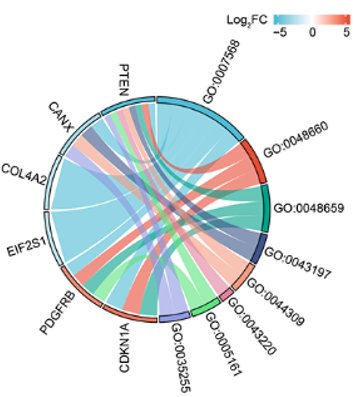Regulation of TGF-β2-induced epithelial-mesenchymal transition and autophagy in lens epithelial cells by the miR-492/NPM1 axis
DOI:
https://doi.org/10.17305/bb.2024.10249Keywords:
Cataract, Nucleophosmin 1 (NPM1), transforming growth factor β2 (TGF-β2), epithelial-mesenchymal transition (EMT), miR-429, autophagyAbstract
A cataract is a clinically common blinding disease closely related to the ageing of the eye cells, which has become a major health killer in the elderly. Our research seeks to analyze the primary targets linked to the pathogenesis of cataracts during the ageing process. We performed bioinformatics analyses on the GSE101727 dataset to discover genes linked with ageing and cataracts. To explore the impacts of Nucleophosmin 1 (NPM1) on cell apoptosis, proliferation, as well as epithelial-mesenchymal transition (EMT) processes, in vitro tests such as western blotting, flow cytometry, and MTT were carried out. Additionally, the study incorporated transforming growth factor β2 (TGF-β2) to examine its function in cellular responses, chloroquine (CQ) to regulate autophagic flow, and H2O2 therapy to mimic oxidative stress. Our study discovered seven ageing-related genes, including NPM1, that had substantial relationships with cataracts. NPM1 overexpression was shown to boost cell proliferation and prevent apoptosis in SRA01/04 cells. Notably, NPM1 modulated the TGF-β signalling pathway, influencing cell proliferation and EMT processes. miR-429 was shown to be adversely regulating NPM1 and autophagy-related proteins, as demonstrated by changes in their expression in response to TGF-β2 treatment. Furthermore, NPM1 knockdown restored autophagy activity suppressed by miR-429 mimics, indicating a complex interaction of miR-429, NPM1, and TGF-β2 pathways in regulating autophagy and EMT. Lens epithelial cell proliferation and apoptosis were largely regulated by NPM1, as well as autophagy and EMT, which were significantly mediated by TGF-β2 and the miR-429/NPM1 axis. These results imply new possible targets for prognosis and therapy of cataracts.
Citations
Downloads

Downloads
Published
Data Availability Statement
The datasets used and/or analyzed during the current study are available from the corresponding author on a reasonable request.
Issue
Section
Categories
License
Copyright (c) 2024 Yanqiong Bao, Guangjie Ding, Haiqing Yu, Yawei He, Jiayan Wu

This work is licensed under a Creative Commons Attribution 4.0 International License.









